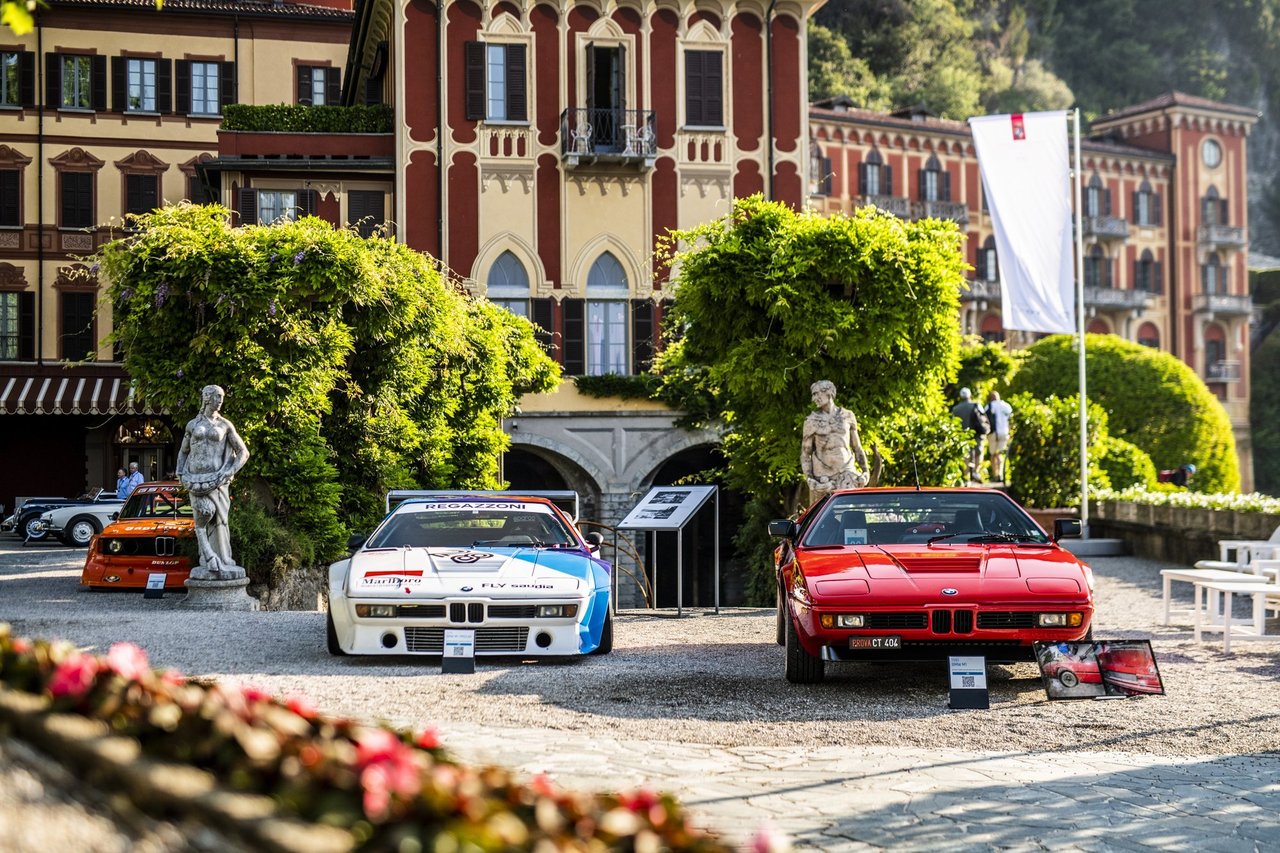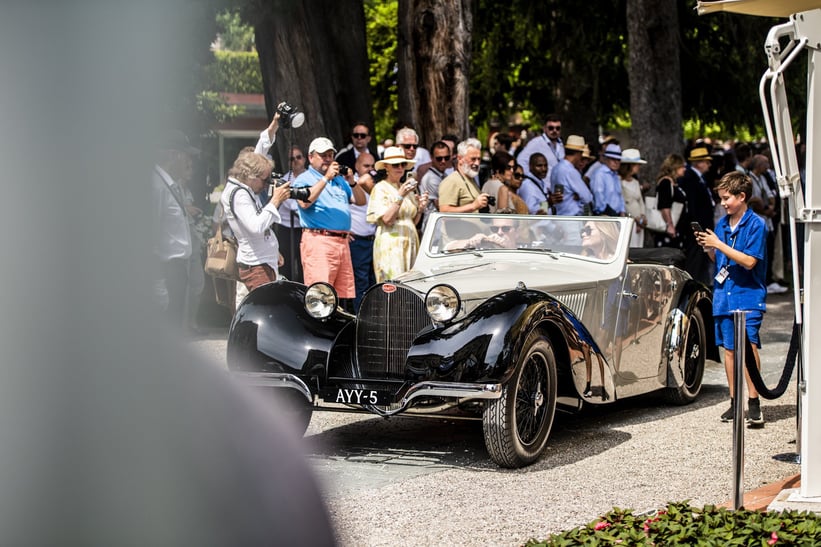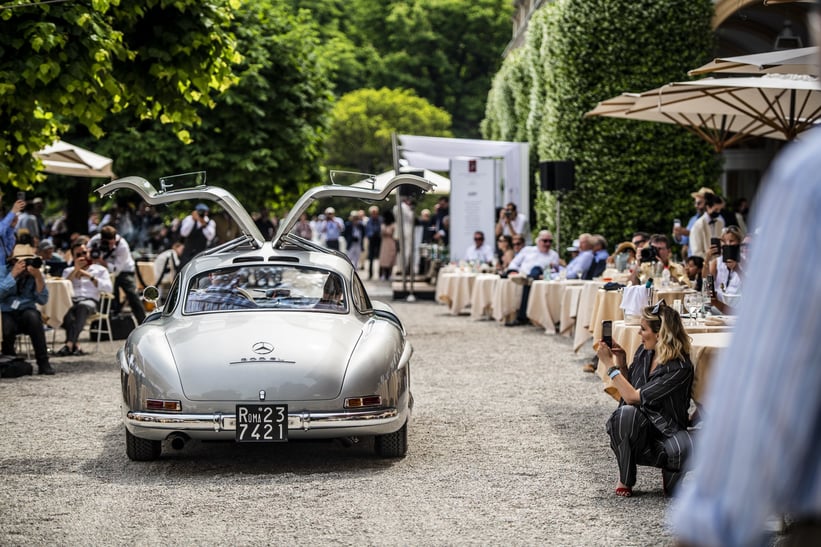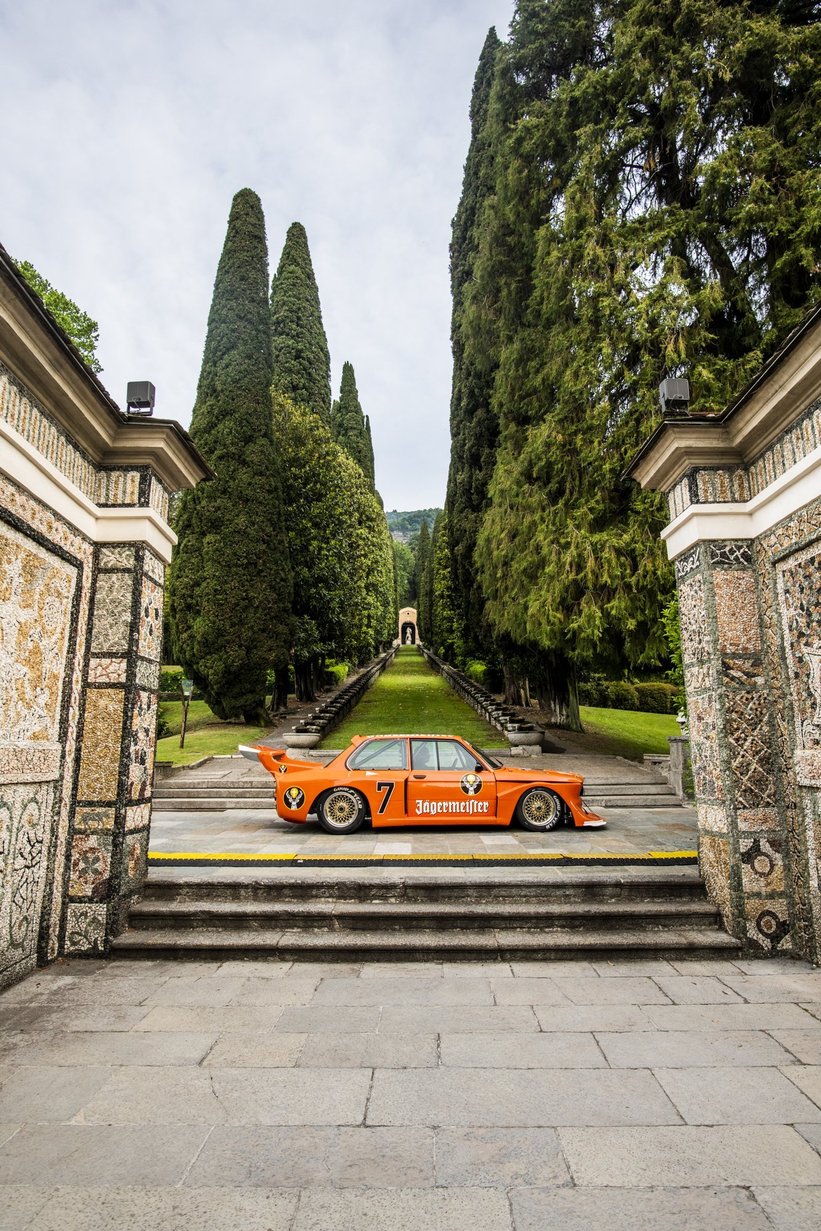

If there is a place where the much-praised Italian grandezza is still very much alive, it must be the Grand Hotel Villa d'Este on the shores of Lake Como. This year, the stately mansion is celebrating it's 150th season as a destination for the international hautevolee. Entering this exquisite time capsule, one feels that the waiters in their white liveries will serve club sandwiches and aperol spritz to the illustrious Tintin characters on the terrace until the end of time, all while the wooden Rivas sway dreamily on the waves. One cornerstone of the grand hotel's fame is certainly the Concorso d'Eleganza Villa d'Este, the timeless automotive beauty contest held on the grounds since 1929.



Still, the organizers from the hotel and the BMW Group gave in to the necessity to modernise even the most successful recipe from time to time, and have slightly shaken up the event. After starting the Concorso d'Eleganza with a prelude tour from Milan to Cernobbio - another step towards an extended Como Car Week - the main concours event at Villa d'Este was limited to participants, invited guests, and ticket owners all weekend. Villa Erba, where the concours cars were displayed on Sundays in the past, hosted automobile clubs from all over Europe.


While the schedule had slightly changed, the mixture of exceptional classic cars still ranks the Concorso d'Eleganza Villa d'Este at the very top of automotive events. While we were perfectly content admiring the stunning coachwork glistening in the sun, most of the cars had some alluring stories to tell too. Documenting the era when automobiles first became objects of desire, the selecting committee had gathered a broad selection of coachbuilt sculptures, from the 1920s and 1930s, fluctuating between Art Deco flamboyance and Bauhaus-inspired modernism.



While the Gangloff-designed Bugatti Type 57C Stelvio represented Jugendstil on wheels, it was the breathtakingly elegant, but rather purist 1937 Bugatti 57S, owned by Andrew Pisker from Monaco, that was awarded "Best of Show" by the jury, taking home the desirable Trofeo BMW Group and the one-off winner watch made by A. Lange & Söhne. Coachbuilt by Vanvooren of Paris, the black and grey convertible stunned jury and spectators alike with its perfect proportions, razor-sharp lines, and rejection of all ornamental decor. Astonishingly, the Bugatti‘s original engine turned up in an internet search after it had been lost for four decades.


Meanwhile, the gorgeously patinated Bugatti Type 59 from the Pearl Collection, once owned by King Leopold III of Belgium and recently featured extensively at Classic Driver, was awarded with the FIVA trophy for the best-preserved pre-war car, a well-deserved win.

This year, the Concorso d'Eleganza committee had dedicated a full class to the stately Mercedes-Benz Kompresser cars. Created after the merger of Mercedes and Benz, they stunned the world with their Supercharged engines and quickly became the automobile of choice for the fast and the glamorous. With its blackberry paint and glasen roof, the 1928 Mercedes-Benz 630 K Coupe de Ville Saoutchik looked like it had been specced by a Great-Gatsby-era Nicki Minaj, while the Mercedes-Benz 710 SS - with its impressive racing sports body - was raced by young aristocrats with illustrious names like Max von Arco-Zinneberg, Prince of Leiningen, or Rittmeister von Mosch.


Another of the massive cars was transferred to Moscow as a war trophy and driven by a KGB general. Still, the 1936 Mercedes-Benz 540 K Cabriolet A had the most remarkable story to tell: the stunningly elegant blue-and-white two-tone convertible had once been owned by Mademoiselle Lucy Franchi, the owner of the famous Parisian Bar Americaine La Roulotte in Montmartre. At the wheel of her Kompressor Mercedes, she shuttled jazz stars Edith Piaf, Duke Ellington, Louis Armstrong, and Django Reinhardt around Paris.



After the Touring-designed Alfa Romeo 6C 2500 had won the “Best of Show” trophy in 1949, it was named “Villa d'Este” in celebration of the success and built in a limited edition of 36 cars. One of them was delivered to a 25 year-old Neapolitanian owner in 1951 and hidden in the Galleria Borbonica, the underground tunnel system of Naples, for many years until it was rediscovered and carefully restored. The 1953 Bristol 404 standing close to it had been used as a test mule for various engines and technologies. Its distinctive tail fin was inspired by Bristol's biggest aeroplane at the time, the Brabazon airliner.


Among these exotics, the silver Mercedes-Benz 300 SL looked rather inconspicuous ... until we learned that it had been once owned and raced by Sophia Loren. We must also mention the Chrysler Boano Coupe Speciale, designed for Fiat boss Gianni Agnelli by Mario Boano, it was then passed on to his brother, Umberto Agnelli, as the unofficial king of Italy could not be seen driving a car from a different maker.



Ferrari is celebrating its 75th anniversary this year, and naturally some of the finest examples from Maranello gathered at the Concorso d'Eleganza Villa d'Este for a high-profile birthday party. The 1956 Ferrari 250 GT Zagato, with its elegant two-tone paint and double-bubble roof, is arguably one of the most beautiful cars ever built, while its contemporary, the 1958 Ferrari 335 S, represented the racing heritage of the iconic brand. One of only four cars built by Scaglietti and fitted with a Vittorio Jano V12, the Ferrari 335 S is the pure-blooded racing sports car of our dreams.


The fact that vintage Ferraris can also be highly practical family vehicles was demonstrated by the owner of the 1966 Ferrari 365 P Berlinetta Speciale Tre Posti. The experimental car bodied by Aldo Brovarone for Pininfarina was the first road-going, mid-engined Ferrari and, thanks to the three-seater configuration, the driver was joined by his wife and son during the afternoon parade. However, if we could have chosen one of the Ferraris to drive home with across the alps, it would have probably been the beautiful 1967 Ferrari 275 GTB/4 in Verde Scuro with orange Connolly leather.


“Win on Sunday, sell on Monday” was the motto for the track-born sports cars at this year's Concorso d'Eleganza. And we do have a soft spot for the fragile and lightweight race cars from the 1950s and 1960s. The 1954 Maserati A6 GCS MM works car was raced at the Dakar Grand Prix in Senegal and the Mille Miglia – the current owner reported that he had to travel to a Sicilian prison with a notary to make the purchase. Two of our favourite racers on the prelude tour, the Porsche 356 B Carrera Abarth GTL that was campaigned in Sweden in period and the Alfa Romeo TZ1, raced by fast women like Nadeene Brengle and Phyllis Gaylard in Southern California, made a strong case for the global appeal of minimalist mid-century racing machinery.


Startling the elegant crowd with their bone-shattering engines during the parade were three exceptional contemporary racecars: one of only 19 Ferrari F40 LMs, a street-legal Nissan R390 GT1 owned and driven by its Le Mans pilot Erik Comas, and a very impressive and highly desirable Maserati MC12. Exqually exciting was the competition class celebrating cars that first broke the magic 300 kph speed barrier, among them a slightly frightening Citroën SM Land Speed Record car, the adorable dark blue Lamborghini Miura SV once owned by the Shah of Iran and a time-capsule condition Porsche 959 S with only 885 kilometres on the clock!


But this was not where the tumult stopped: celebrating 50 years of BMW M, the participants had brought some seriously mean Bavarian machinery to Lake Como. The BMW M1 is the forebearer of all M cars – and the white, red, and blue works racer driven in the M1 Procar Series by Clay Regazzoni and Carlos Reutemann was the best example of BMW's famous power-house one could think of.


Our friends from Rennmeister and 72StagPower had brought the Jägermeister Racing BMW 320 Gruppe 5 that we had already met for an after-dark tour of the Villa d'Este the night before the show. Massively wide, weighing just 760 kilograms, and equipped with a 310 hp two-litre, four-cylinder F2 engine revving up to 10,000/min, the ridiculously quick BMW 320 Gruppe 5 scored 33 wins in 59 races. Seeing the brazen racetrack bruiser being driven across the terrace by Jägermeister Racing team owner Ecki Schimpf was a sight to behold.



Still, the most otherworldly car this year at the Concorso d'Eleganza Villa d'Este was the Aston Martin Bulldog. Having laid dormant for 35 years, the world’s first hypercar has at last been restored back to designer Wiliam Towns’ original radical vision for a 200mph luxury spaceship. Four decades after it first stunned the world, the Aston Martin Bulldog has now won the Coppa d'Oro Villa d'Este trophy awarded by public vote. Having followed the restoration process from the beginning, we can only agree with the crowd at the Concorso d'Eleganza that this win for owner Phillip Sarofim and project leader Richard Gauntlett is more than well deserved. Long live the wedge!


Last but not least, there were the contemporary concept cars: Zagato unveiled a new Maserati-based open-top Mostro, Marc Philip Gemballa presented the impressive Marsien, and Touring showed off a Gulf-coloured version of the Arese RH95. Driven across the Grand Hotel’s terrace by the ever-stylish Rita Spiess, the surreal Bugatti Bolide concept car won the Design Award by public vote, bringing home the third major trophy for Bugatti in a weekend to remember.
Photos: Remi Dargegen for Classic Driver





































































































